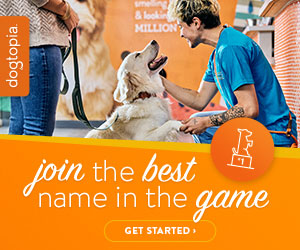Why Dwell Time Is the New KPI Every Franchise Should Track

In an era of constant digital distraction and declining foot traffic, traditional success metrics like sales per square foot no longer tell the full story. For brick-and-mortar businesses, the new gold standard is dwell time — the number of minutes customers spend engaging with your brand in person.
Franchises that prioritize dwell time gain a clearer view of loyalty, engagement, and long-term growth potential.
Rethinking the old metrics
The rules of retail are changing rapidly. From high fashion to home improvement, even legacy brands are gut-renovating their stores to encourage people to stay longer. Ralph Lauren added a coffee shop, not to sell lattes, but to sell time. Dick’s Sporting Goods built climbing walls and casting ponds, not to open theme parks, but to keep people on-site.
These aren’t gimmicks. They reflect a shift in what people want from in-person experiences. In a world where almost anything can be clicked and shipped, what brings people into a space is the chance to engage, not just shop. That’s where dwell time comes in, how long someone spends with your brand on-site.
Why time spent matters
It’s simple: the longer someone stays, the more they spend. But more importantly, the more they begin to associate your brand with an experience, the more likely they are to come back. It’s that return visit that builds loyalty and long-term growth.
Yet many franchises still focus on traditional KPIs: revenue per square foot, labor-to-revenue ratio, or ticket counts. These are important, but they don’t measure how a brand lives in someone’s life. That’s where dwell time becomes more than another metric; it becomes a strategy.
How service franchises can win here
You don’t need a million-dollar buildout budget to create dwell-worthy spaces. Service franchises are often best positioned to benefit from this. If your business already offers scheduled services like classes, consultations, or appointments, you’re already starting with a customer’s full attention. The next step is transforming those visits into presence.
Presence means staying power
Presence isn’t just showing up, it’s lingering. It’s when someone chats with your team, browses your shelves, refers a friend, or hangs out just a little longer than necessary. That presence leads to community, and community creates a moat competitors can’t easily replicate.
At Zoom Room, we’ve seen this firsthand. When clients return week after week, year after year, they don’t just stay longer, they become brand advocates no marketing budget can buy.
What drives that stickiness? It’s not just great service. It’s a structure built for participation, routine, and enabling customers to stay and engage. Our gyms aren’t just designed for throughput. They’re designed for return visits, and that changes everything.
Five ways to design for dwell time
- Make the space sticky - Is there a reason to stay? Can people browse, watch, chat, sip, try, or share? Your physical layout should invite engagement, not just efficiency.
- Build rituals, not just transactions - A weekly class, a monthly grooming visit, or a regular family night - these are services that become part of a person’s life. Rituals create rhythm, and rhythm leads to retention.
- Don’t confuse convenience with connection - Yes, streamlined checkouts and app-based scheduling are great, but if your only goal is speed, you’re pushing people away faster. Balance efficiency with invitation.
- Monetize presence indirectly - Dwell time isn’t about upselling aggressively. It’s about creating natural opportunities for discovery, such as retail, referrals, or added services.
- Track the right signals - Add dwell time to your dashboards. Measure average time on site per customer visit. Look at patterns across dayparts, customer segments, and service types. If it moves, manage it.
The new moat: Time well spent
It’s easy to dismiss dwell time as a “nice to have.” But in reality, it’s a key differentiator in brick-and-mortar business. The brands that survive the next decade will be the ones that transform time on site into time well spent.
Franchisees are especially well-positioned to lead in this area. They know their communities, their customers, and the power of face-to-face trust. If franchisors design models that reward presence, not just purchases, they won’t just keep up with consumer expectations. They’ll set the pace.
Don’t design for space, but design for time. It’s about the minutes and what those minutes feel like. Design for that, and loyalty becomes the outcome, not the objective.
Mark Van Wye is the CEO of Zoom Room.
Share this Feature
Recommended Reading:
| ADVERTISE | SPONSORED CONTENT |
FRANCHISE TOPICS
- Multi-Unit Franchising
- Get Started in Franchising
- Franchise Growth
- Franchise Operations
- Open New Units
- Franchise Leadership
- Franchise Marketing
- Technology
- Franchise Law
- Franchise Awards
- Franchise Rankings
- Franchise Trends
- Franchise Development
- Featured Franchise Stories
| ADVERTISE | SPONSORED CONTENT |








 The franchise listed above are not related to or endorsed by Franchise Update or Franchise Update Media Group. We are not engaged in, supporting, or endorsing any specific franchise, business opportunity, company or individual. No statement in this site is to be construed as a recommendation. We encourage prospective franchise buyers to perform extensive due diligence when considering a franchise opportunity.
The franchise listed above are not related to or endorsed by Franchise Update or Franchise Update Media Group. We are not engaged in, supporting, or endorsing any specific franchise, business opportunity, company or individual. No statement in this site is to be construed as a recommendation. We encourage prospective franchise buyers to perform extensive due diligence when considering a franchise opportunity.